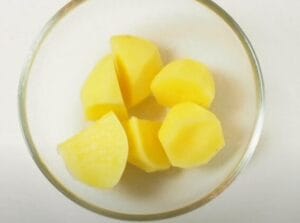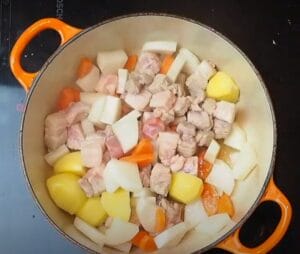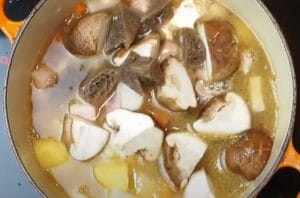This is Nazia from Food And Meal. As some of you know, I love exploring cuisine from around the world and putting my own spin on classic dishes. Lately I’ve been infatuated with Japanese hot pot recipes and came up with this Japanese Tonjiru Hot Pot that I can’t get enough of!
Hot pot is such a fun, interactive meal that brings people together through good food and conversation. The variety of ingredients cooking in the simmering broth keeps everyone engaged and waiting for their next favorite morsel.
In my Japanese-inspired hot pot, I use a savory miso broth with tender pork belly and hearty vegetables like daikon radish, carrots and shiitake mushrooms. It’s packed with umami flavor that seeps into the ingredients as they cook. I love the rich, nutty notes the broth takes on.
The pork belly cooks up melt-in-your-mouth tender while the vegetables soak up all that tasty broth. I also can’t resist dipping the ingredients in ponzu, raya and goma dare as I eat. Every bite is so satisfying!
I hope my Japanese Tonjiru Hot Pot inspires you to gather friends around the table for some cooking and bonding. Let me know if you have a favorite hot pot recipe to share!
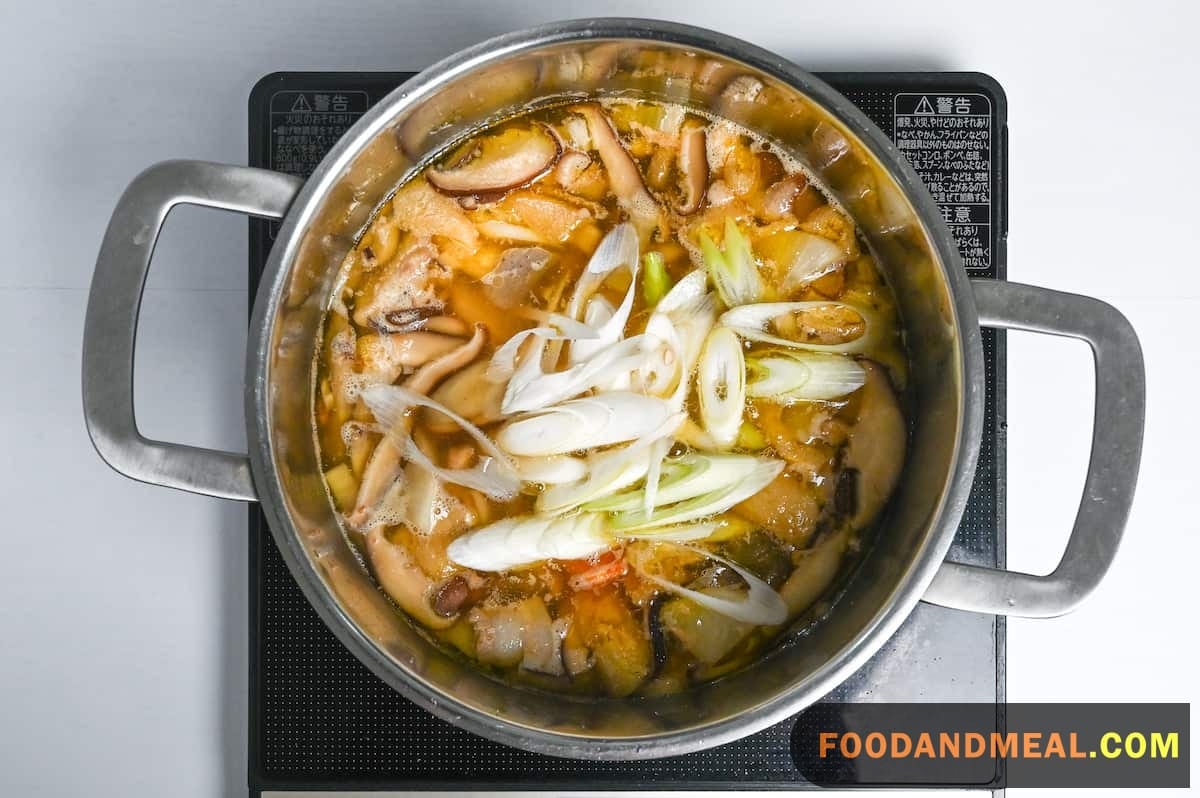
Japanese Tonjiru Hot Pot Recipe
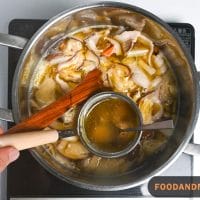
Japanese Tonjiru Hot Pot
Equipment

Ingredients
- 5 cups of dashi
- 1⁄2 tablespoons of oil, sesame
- 1⁄2 pound of sliced, cubed pork belly
- 1 teaspoon of minced or ground ginger
- 1 tablespoon of canola oil
- 1 medium onion
- 1 x 2 radish, daikon
- 1⁄2 burdock root (gobo)
- 2 Japanese Taro (Satoimo)
- 1⁄2 to 1 carrot, medium
- 1/3 block of konjac (konnyaku)
- 5 tablespoons of miso
- 1⁄2 package of cubed tofu, med. firm
- 1 sliced green onion
Instructions
- Prepare the five cups dashi stock. After it is ready, set it aside.

- Cut veggies into small sized pieces.

- In fry pan, heat the sesame oil on med-high. Add ginger and meat. Cook till browned nicely. Set it aside.

- In large sized pot, heat canola oil over med. high heat. Sauté the onion till coated well with the oil.

- Add carrots, baby taro, daikon and gobo, along with the rest of any harhardb ingredients you choose to include. Mix well. Add konnyaku and the softer ingredients, including mushrooms. Stir till all is mixed well.

- Pour the dashi stock in large sized pot.
- Add meat. Bring soup to boil. Immediately before it boils, skim fat and scum off soup. Simmer till veggies become soft.
- Use a strainer to add the miso. Be sure it dissolves completely. Add the tofu. Gently stir but don’t break it up.
- When ready to enjoy, reheat miso soup over med-high. Never allow it to boil, as this causes flavor loss. Add green onion and serve your guests in individual bowls.
Video
Notes
- Tip for the Perfect Broth: The essence of Tonjiru lies in its rich broth. Always use fresh ingredients, and don’t shy away from letting it simmer a tad longer.
Nutrition
© Food And Meal
This website provides approximate nutrition information for convenience and as a courtesy only. Nutrition data is gathered primarily from the Spoonacular Database, whenever available, or otherwise other online calculators.
Tonjiru Hot Pot: Pressure Cooker Method
Layer ingredients strategically, starting with hard vegetables, then pork, tofu, and more. Pour in broth, ensuring it covers without exceeding the cooker’s limit. Cook for 25 minutes on high pressure, followed by a natural release for 15 minutes. Add soft ingredients, adjust seasoning, and serve your delectable Tonjiru in no time!
Cooking Tips for Tonjiru Hot Pot

When prepping the pork belly, try to find nice thick-cut, marbled pieces for maximum flavor and tenderness. Let them simmer long enough to become fall-apart tender in the miso broth. I also love adding thinly sliced pork shoulder along with the belly.
For the vegetables, hearty root veggies like daikon radish, potatoes and carrots hold up well. Mushrooms like shiitake also soak up the broth beautifully. I use dashi powder to reinforce the savory umami notes.
Part of the fun is gathering with friends, cooking the ingredients to perfection, and dipping to your heart’s content in the ponzu, raya and goma dare. The broth takes on so much more flavor as you cook.
Hot pot brings me so much joy in sharing precious memories over good food. I feel happy and grateful when my friends and family enjoy this dish together.
Serving Suggestions for Tonjiru Hot Pot
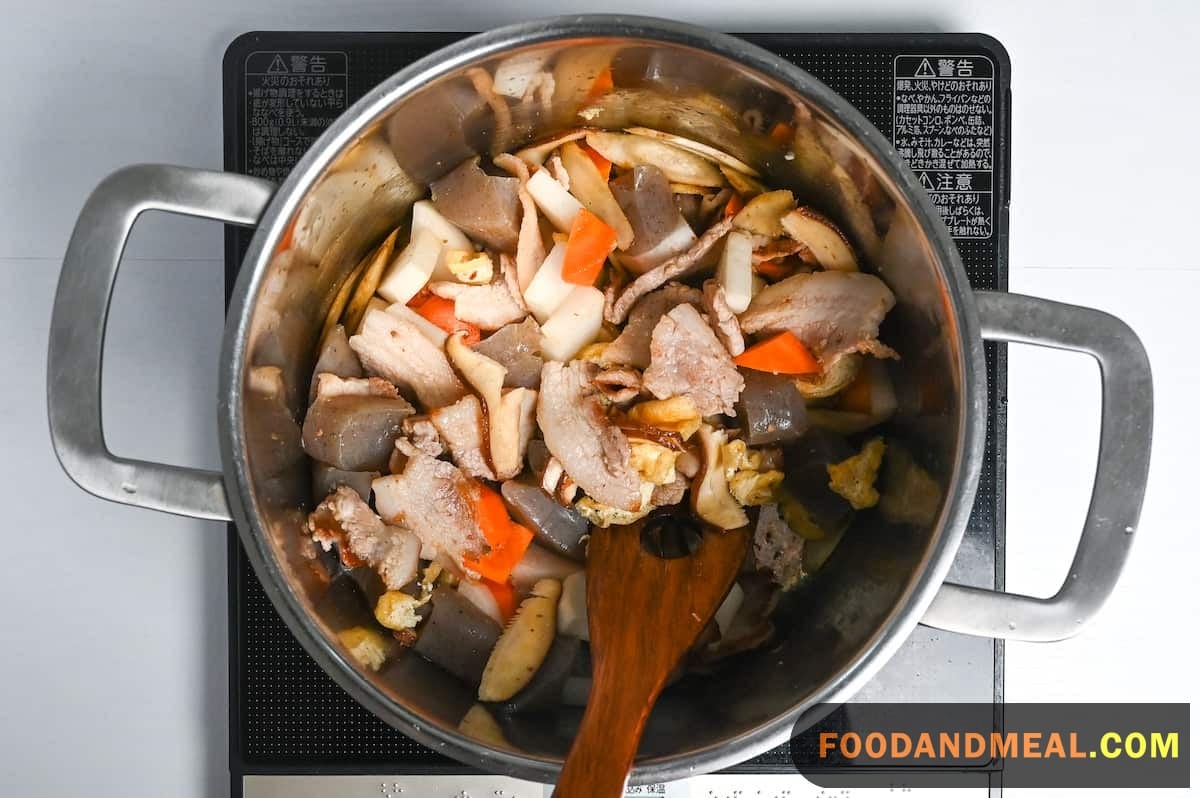
For a comprehensive and diverse Japanese culinary experience, you can serve Tonjiru Hot Pot alongside dishes such as Yakimiso Ramen or Sui-Gyoza Soup to create a delicious and distinctive meal. For those seeking unique flavors, Shio Koji Soup can be an excellent choice with its tangy and savory notes derived from Shio Koji. Yosenabe Hot Pot offers a complete Japanese experience with its diverse combination of ingredients. To balance the savory richness of Tonjiru, a serving of fresh and tasty Vegetable Maki is the perfect choice. Additionally, Classic Miso Ramen and Teriyaki Steak will create a fully flavored meal, from the delightful taste of miso noodles to the savory aroma of teriyaki beef. For those opting for a meatless menu, Vegetarian Gyoza is another delicious choice. Don’t forget to provide condiments such as soy sauce, chili oil, or white sesame seeds for guests to freely add, enhancing a personalized culinary experience.
List of 5 FAQs on Tonjiru Hot Pot
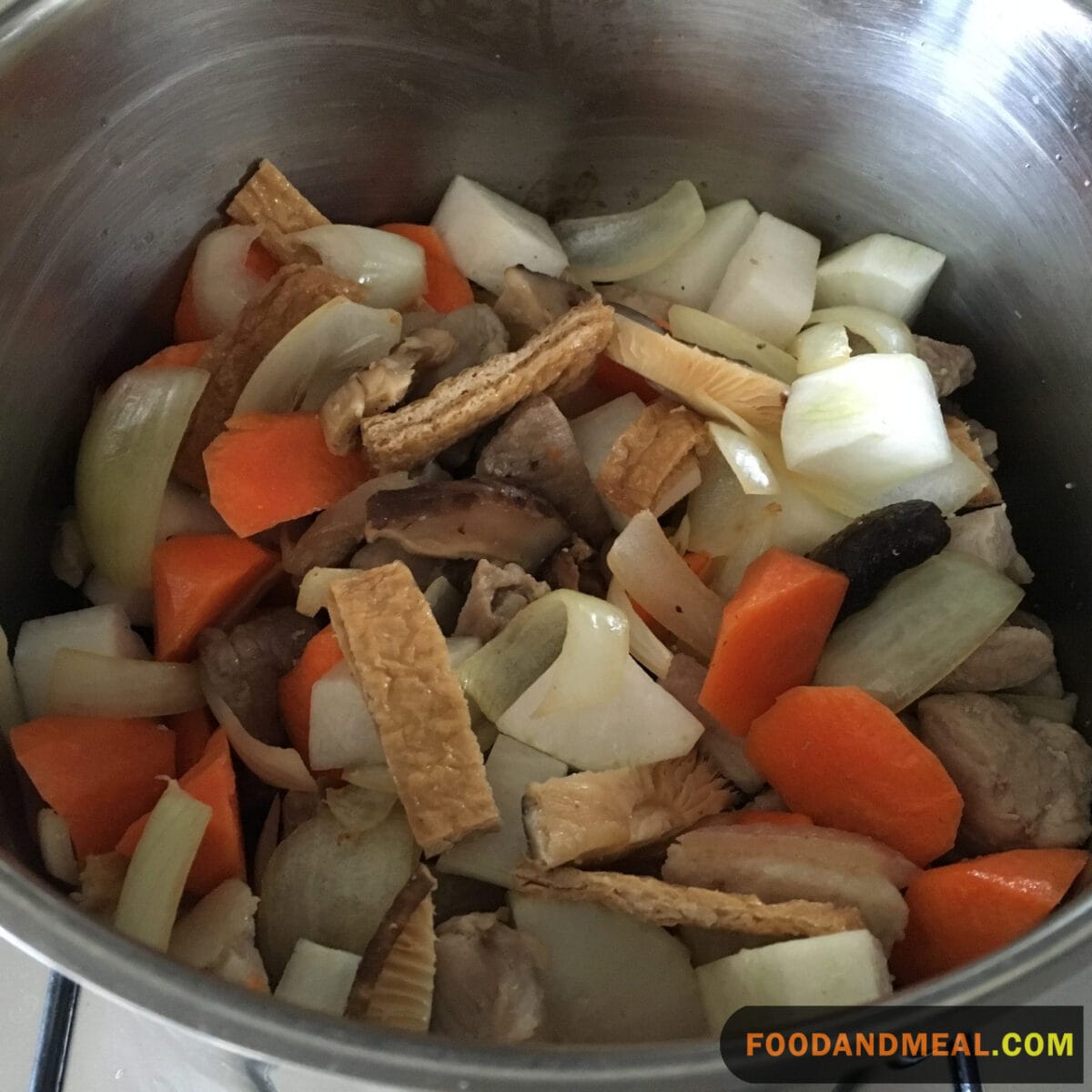
- Can I use chicken instead of pork in Tonjiru?
Absolutely! While pork is traditional, chicken, especially thighs, can be a great substitute. It gives a different but equally delightful flavor profile. - What if I can’t find a specific vegetable or ingredient?
Japanese cuisine, including Tonjiru, is adaptable. Feel free to experiment with locally available produce. Remember, it’s the essence and technique that matters most. - Why is my broth cloudy?
Vigorous boiling can cause this. Always aim for a gentle simmer. Also, adding ingredients to already simmering broth, rather than cold water, can help maintain clarity. - How can I store leftovers?
Cool the Tonjiru to room temperature and transfer it to an airtight container. It can be refrigerated for up to 2-3 days. Reheat gently before serving, ensuring not to bring it to a rolling boil. - Is Tonjiru gluten-free?
Traditional Tonjiru may contain soy sauce, which has gluten. If you’re aiming for a gluten-free version, ensure you use gluten-free soy sauce or tamari. Always check the labels of your ingredients.
Conclusion
I hope you all enjoyed this glimpse into my Japanese Tonjiru Hot Pot recipe and some of my favorite cooking tips. Hot pot is such a fun, interactive meal that brings people together through good food and conversation.
If you try out this recipe, let me know! I’d love to see your hot pot creations and hear how it turned out. Share photos on social media and tag @foodandmeal so I can check them out.
Hot pot holds a special place in my heart because of the memories it evokes. I feel so grateful when friends tell me that enjoying this dish together has given them special memories too.
Hi! I'm Nazia of ‘Nazia Cooks’, a self-taught baker and cook residing in Chennai. Rooted in the rich South Indian culinary landscape, my palate has expanded to embrace global flavors. I revel in crafting fusion dishes, melding traditions to birth unique tastes.


